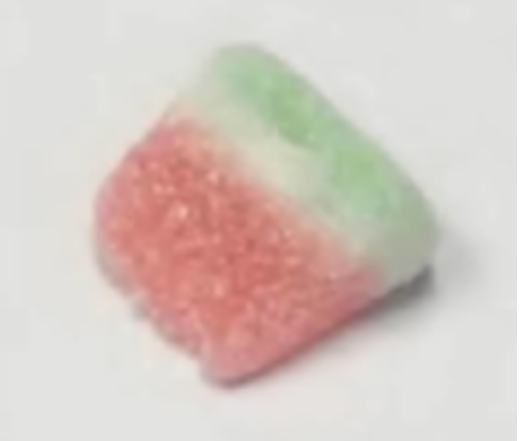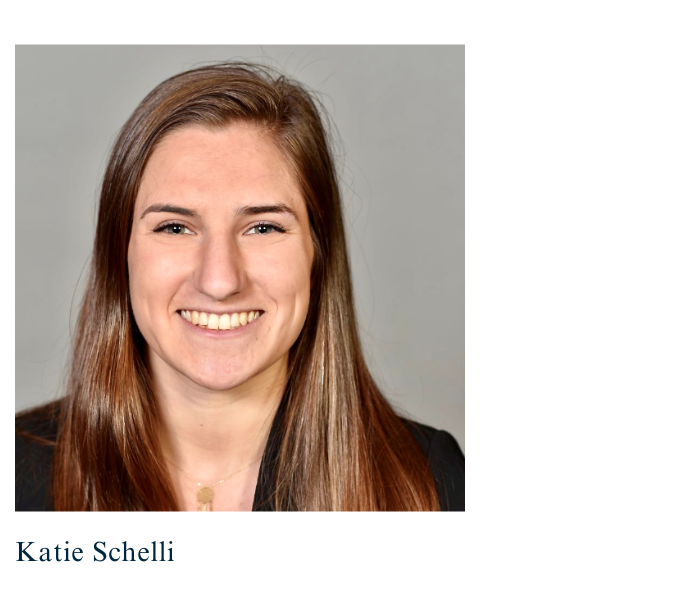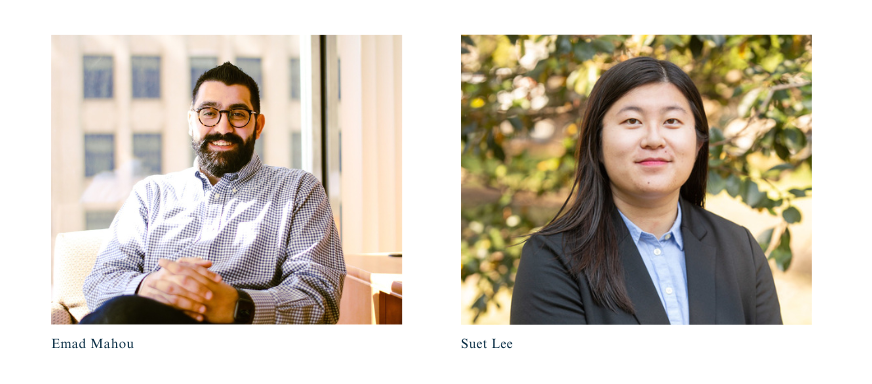When an organization publicly disavows a trademark, does it turn over the mark to the public domain? Regarding the “Chief Illiniwek” Logo (“Chief Logo”), the Northern District of Illinois punted by denying Vintage Brand LLC and Sportswear Inc.’s (collectively, “Defendants”) motion for summary judgement that the mark was abandoned. The Chief Logo, shown on the right, was styled after a mascot that performed at Plaintiff’s athletic events named for the indigenous people who ancestrally populated much of present-day Illinois. Both the mascot and logo depict a Native American man in a traditional headdress and regalia.
In 2007, following an NCAA ban that prohibited NCAA colleges and universities from displaying imagery deemed hostile and abusive to Native American cultures, Plaintiff publicly disavowed use of Chief Illiniwek and forbade most of its licensees from using the Chief Logo. Plaintiff did continue a limited license to the Chief Logo via its College Vault Program, through which online-only sales of products bearing the logo have continued to the present day (although these sales amount to no more than 0.6 percent of the Plaintiff’s aggregate licensing revenue). Publicly, however, Plaintiff has run the same play, repeatedly disavowing the Chief Logo. After Defendants began selling unauthorized vintage merchandise bearing the Chief Logo, Plaintiff commenced litigation against Defendants, who moved for summary judgment on the affirmative defense of trademark abandonment before discovery had closed.
First, the Court evaluated whether Plaintiff’s use of the Chief Logo, via the College Vault licenses, was source-identifying or merely ornamental. The Court acknowledged Plaintiff’s repeated public disavowal of the mark and public awareness of Plaintiff’s expressed intent to distance itself from Chief Illiniwek. But the Court also noted it needed to consider how the public views the mark. On balance, the Court found summary judgment inappropriate in light of the undeveloped factual record.
Second, the Court analyzed whether Plaintiff’s College Vault Program was merely a trademark maintenance program, rather than bona fide commercial use of the Chief Logo. Plaintiff’s evidence of thousands of dollars in sales indicated it was not just a trademark maintenance program. And, Plaintiff’s restrictions on the number of licenses and types of sales permitted by licensees did not necessarily mean that the University has concealed itself as the source. Once again, that determination required evidence as to what the public knew or believed about the source of the Chief Logo products.
Third and finally, the Court analyzed whether the sales volume of merchandise with the Chief Logo showed prima facie abandonment. The Court found that summary judgement was inappropriate because 1) low sales do not per se indicate a de minimis use necessary to find prima facie abandonment and 2) Plaintiff had sold over 27,000 products with the Chief Logo through the College Vault Program from late 2003 through early 2022.
The Court denied Defendants’ motion without prejudice so for now, the final whistle has not blown on whether Plaintiff abandoned its trademark. This case is one to watch for brand owners that may wish to keep an older trademark alive and prevent others from using it despite a brand refresh or total rebrand.
LKQ Corp., represented by Lex Lumina PLLC and Irwin IP LLP, is advocating for a shift in the approach to evaluating the invalidity of design patents, urging a reevaluation of what they consider a “common sense” perspective. In response, GM Global Technology Operations LLC has presented its opposing viewpoint to the full Federal Circuit, asserting that LKQ’s proposal may lead to an undesirable “free-for-all” scenario that the federal appeals court should not endorse.
Read the full article at: GM Warns Full Fed. Circ. Against Design Patent ‘Free-For-All’ – Law360
*This article is located behind a paywall and is only available for viewing by those with a subscription to Law360.
Irwin IP is thrilled to announce a significant milestone in Barry Irwin’s legal career – 20 incredible years with Super Lawyers®.
Barry Irwin joins a distinguished group of attorneys who have been consistently recognized as Illinois Super Lawyers since the very beginning. This journey has been filled with the privilege of serving clients with unwavering commitment. Each year, Barry has strived to uphold the highest standards of legal excellence, and this recognition is a testament to that dedication.
This week, the U.S. District Court for the Southern District of New York dismissed Liberty Tax Services’ suit alleging trademark and trade dress infringement, trademark dilution, and defamation against AMC for AMC’s use of “Sweet Liberty Tax Services” (“SLTS”) in Season 6 of “Better Call Saul.” In Season 1, minor antagonist Craig Kettleman went to prison after embezzling $1.6 million. He returned for one episode in Season 6, starting a tax business, SLTS, and used it to “skim[] money from [customer] tax refunds.” Liberty Tax Services filed suit to protect its mark and trade dress, claiming that SLTS was “an obvious imitation . . . twisted to paint Liberty Tax in a negative and disparaging light . . . [with] just the word ‘Sweet’ added.” AMC moved to dismiss for failure to state a claim under the First Amendment.
The court first turned to the Rogers test, which offers First Amendment protections for “hybrid” works “combining artistic expression and commercial promotion.” First, the court must determine whether the Rogers test could even apply. If so, the court analyzes the case on the merits of the Rogers test. Rogers applies when use of a mark (1) is in an “artistic” or “expressive” work, (2) unless the mark was used as a designation of source for the infringer’s own goods. It was “undisputed” that Better Call Saul is an artistic or expressive work. Regarding whether the use of the allegedly infringed mark was “a designation of source” for AMC’s own goods—the court concluded that SLTS was not a designation of source for Better Call Saul because AMC did not use SLTS for anything sold by AMC (notwithstanding AMC’s brief use of SLTS in its Season 6 trailer). Accordingly, the court found that—unlike the Supreme Court’s recent Jack Daniels v, VIP case—Rogers applied. Jack Daniels was distinguishable because VIP filed a trademark application on Bad Spaniel, showing VIP used Bad Spaniel as a designation of source.
The court then turned to whether Rogers provided First Amendment protection over AMC’s use of SLTS. Specifically, the court considered whether (1) the use of the mark was “artistically relevant” and (2) was not “explicitly misleading.” The court found that SLTS is “clearly ironic . . . and the Kettlemans’ use of Plaintiff’s trade dress is a gaudy and shabby appropriation of patriotic imagery that highlights their hypocrisy . . . all of which has ‘genuine relevance to [the Episode’s] story.’” Thus, the court rejected Plaintiff’s conclusory statement that AMC “arbitrarily chose” to use SLTS. Finally, the court determined whether the use of SLTS was “misleading in the sense that it induces members of the public to believe [the work] was prepared or otherwise authorized [by the plaintiff].” Such a finding had to be “particularly compelling.” But the court found it unlikely that consumers would be confused (and, therefore, the mark was not explicitly misleading), given the different markets, consumers, and goods and services. Accordingly, the court dismissed Liberty Tax’s Lanham Act claims and state law claims because Liberty Tax could not state a plausible claim to relief given the protection offered by the First Amendment.
A notable distinction between this case and this year’s Jack Daniels ruling is that this court ruled on the applicability and merits of the Rogers test in a Rule 12(b)(6) motion at the pleadings stage, whereas Jack Daniels was decided on summary judgment. While not guaranteed, this suggests that creators of works of art may avoid substantial trademark litigation by raising these First Amendment defenses early.

After first granting a request for an interim stay of an injunction entered against Evenflo Co. Inc. for selling certain car seats which were found to infringe patents owned by Wonderland Switzerland AG, the Federal Circuit later removed that interim stay as to one patent. The district court’s granting of the permanent injunction and the Federal Circuit’s decision to remove the stay and thereby allow then injunction to issue, may have been based on the inability for monetary damages to adequately compensate Wonderland in light of Wonderland’s harm from lost sales, lost market share, and reputational loss and Everflo’s business relationship with Walmart.
Everflo and Wonderland are direct competitors who design, manufacture, and sell a variety of products for children including child car seats. Wonderland owns U.S. Patent Nos. 7,625,043 (“the ’043 patent”) and 8,141,951 (“the ’951 patent”) which cover child car seats.
In 2020, Wonderland sued Everflo for infringement of the ’043 and ’951 patents in the U.S. District Court for the District of Delaware. In 2023, a jury found that Evenflo infringed one or more claims of both patents. After trial, Wonderland moved for a permanent injunction against Everflo. The district court granted Wonderland’s post-trial motion for permanent injunction for both patents on the basis that the permanent injunction factors weighed in favor of Wonderland. Notably, the district court found that Wonderland could not be adequately compensated by monetary damages because Wonderland’s harm from lost sales, lost market share, and reputational loss were difficult to quantify. The district court also highlighted that Everflo’s business relationship with Walmart, a major car seat retailer, would cause harm to Wonderland and would make it impossible to adequately compensate Wonderland. Everflo then moved for a stay of the permanent injunction, noting Wonderland had not moved for a permanent injunction on the ’951 patent, which was denied by the district court because it had interpreted Wonderland’s motion to apply to both the ’043 and ’951 patents, and appealed the decision on the ’043 patent to the Federal Circuit. Everflo did not appeal and move to stay the injunction on the ’951 patent because Everflo discontinued and redesigned the products that infringed the ’951 patent. The Federal Circuit initially granted an interim stay of the permanent injunction but, on August 21, 2023, removed the stay as to the ’043 patent.
Decisions to grant a permanent injunction and to remove the interim stay on that injunction are rare in light of the difficulty patent holders have had in even obtaining an injunction over the last decade since the eBay Inc. v. MercExchange, L.L.C. case. In eBay Inc., the Supreme Court made it more challenging for patent owners to obtain an injunction against infringers by holding that patent owners were not presumptively entitled to an injunction after demonstrating infringement, and courts since have generally assumed that patent owners are made whole by monetary damages. However, unlike most other cases, the harm from Wonderland’s lost sales, lost market share, and reputational loss and Everflo’s business relationship with Walmart was difficult to compensate with monetary damages such that an injunction was necessary to prevent further harm to Wonderland. This case highlights the circumstances needed in order to obtain and avoid an interim stay of a permanent injunction pending appeal.
In a motion to dismiss before the Central District of California, District Judge Garnett made clear that personal jurisdiction stands for the foreign affiliate when the foreign affiliate is merely an “alter ego” of their domestic partner. The Central District considered a motion to dismiss for lack of jurisdiction and Forum Non Conveniens by defendants Suga PTE, LTD (“Suga Singapore”) and Suga Co., LTD (“Suga Vietnam”) in a copyright infringement case between gaming powerhouse Riot Games, Inc. and a host of defendants. Although the Court had found personal jurisdiction over defendants Imba Tech and Imba Network LLC., defendants Suga Singapore and Suga Vietnam moved to dismiss, arguing that they are foreign corporations that perform their corporate and business activities exclusively in Singapore and Vietnam and do not have substantial and continuous contacts in the United States. In addition, they argued the lack of convenience of the United States as a forum. The Central District of California found the record sufficient to show that the four defendants were alter egos of each other, justifying the exercise of personal jurisdiction over the foreign defendants while also finding the defendant’s arguments failed to make a clear showing that the forum imposes “such oppression and vexation” to be inappropriate.
As the Ninth Circuit in Ranza v. Nike explained, the alter ego test extends personal jurisdiction to a foreign party or subsidiary when the foreign entity is not really separate from its domestic affiliate. The test requires a plaintiff to make a prima facie showing that (1) there is such a unity of interest and ownership that the separate personalities no longer exist and (2) that failure to disregard their separate identities would result in fraud or injustice. Judge Garnett explained that the first prong requires a showing that the foreign entity controls the other “to such a degree as to render the latter the mere instrumentality of the former” with ownership not being a requirement.
Judge Garnett found that both prongs of the test were satisfied with respect to the Suga Defendants. For the first prong, the Court noted the following circumstances in support of its finding: (1) common ownership and managerial functions, (2) disregard for corporate formalities i.e., “no corporate records, let alone separate ones, corresponding to inter-entity transactions,” no documents indicating the ownership split, etc., (3) Suga Singapore’s status as the sole member of Imba Network, and (4) what the Court describes as a “record [] replete with examples showing that the Defendants commingle their funds.” For the second prong, Judge Garnett also found that treating the entities separately would result in injustice where foreign corporations provided substantial funding and marketing to target customers in the United States while attempting to hide behind local entities.
Corporate counsel should be wary when their clients want to skip the formalities between their businesses, as courts may not treat the businesses as separate entities, which can have serious consequences. Additionally, plaintiffs may want to join foreign related companies hiding behind their domestic alter egos as this may open up additional discovery and damages while also providing a more efficient process. Not every country has the open discovery policies of the United States, and having to litigate across multiple countries can dramatically increase both costs and complexity.

Choose your trade dress carefully, if the design as a whole has any function, your trade dress may be invalid. On September 7, 2023, the Third Circuit held that a candy’s trade dress consisting of a wedge shape with red, white, and green colors was functional because the combination of the candy’s shape and colors passed the “low” bar for functionality by identifying the candy as watermelon flavored.
PIM Brands Inc. (“PIM”) registered trade dress for a piece of candy comprising of “the shape of a wedge for candy, with an upper green section with white speckles, followed by a narrow middle white section and followed by a lower red section with white speckles” that PIM called “Sour Jacks Wedges.” PIM sued Haribo of America Inc. (“Haribo”) for trademark and trade-dress infringement under the Lanham Act and for unfair competition under New Jersey common law for selling an elongated watermelon candy that is red, white, and green. Haribo asserted on summary judgment that PIM’s trade dress was functional due to its shape and color scheme. The district court agreed with Haribo, finding PIM’s trade dress registration was functional by identifying the candy as watermelon flavored. PIM appealed, arguing that the district court did not focus on the candy’s wedge shape in isolation from the candy’s colors as the shape separately identified PIM’s brand. However, PIM did admit the candy’s colors were functional because it identified a watermelon flavor.
On appeal, the Third Circuit identified how a “design is functional if it is useful for anything beyond branding.” The court explained “because the functionality bar is low” that “if a design choice ‘would put competitors at a significant non-reputation-related disadvantage,’ then the trade dress is functional.” Even a design that promotes a brand would still be functional if the design “makes a product work better.” The court rejected PIM’s argument that the district court should have analyzed the wedge’s shape in isolation from its colors because a court does not need to analyze each individual feature of a trade dress to see if it independently contributes to a certain function. The court cited to the trademark statue that when analyzing whether a trademark is functional, a court must consider the design “as a whole” 15 U.S.C. § 1052(e)(5).
Next, the court analyzed PIM’s mark as a whole and found that any reasonable juror would agree that PIM’s whole trade trades resembles a watermelon wedge. The orientation of PIM’s candy matches the orientation of an actual watermelon wedge: “each has a long, wide, green base; a thin, white layer running the length and width of the green base; and a triangular, reddish-pink top covering that white layer and angling up to a point.” The court found it did not matter that PIM’s trade dress did not exactly match a watermelon wedge, as the trade dress needed to only evoke a watermelon wedge. The court rejected PIM’s argument that the district court focused too much on the candy’s colors and not the shape because PIM’s registration was for both the color scheme and the shape of the wedge. The court held that both the color and the shape of the candy helped resemble a watermelon flavor and that function was enough to find the trade dress invalid.
In light of this decision, businesses should be careful with trade dress registration and strategy. While the Third Circuit explained that a trade dress is functional if there is a “significant non-reputation related disadvantage” the court still called functionality a “low” bar. If your trade dress, as a whole, has any function, there is a chance a court may find that the trade dress is invalid.

Irwin IP is thrilled to announce the return of Katie Schelli, one of our 2021 summer associates. Katie has since graduated from Vanderbilt Law School and gained valuable experience clerking in the United States District Court for the District of Nevada for the Honorable Judge James C. Mahan.
We look forward to witnessing Katie’s future filled with innovation and success.

In a recent decision, the Court of Appeals for the Federal Circuit (“CAFC”) resolved district court splits regarding obviousness-type double patenting (“ODP”) by holding that ODP is still a valid challenge to patent validity and that the application of ODP is not dependent on intent of the patentee.
ODP is a judicially created doctrine aimed at preventing a patentee from unfairly extending its patent term by obtaining a later expiring patent covering essentially the same invention in an earlier patent. In order to overcome an ODP challenge, a patentee may file a terminal disclaimer that limits the term of later-expiring patent to the term of earlier-expiring patent. Some district courts have held that ODP does not apply to any patent whose term has been extended under 35 U.S.C. § 154(b), i.e., a patent term adjustment to compensate for PTO delays in issuing the patent (“PTA”). Other district courts, however, have applied ODP to patents extended by PTA. Similarly, some district courts have found ODP discretionary if the patentee acted in good faith in obtaining the PTA; while others have not.
The CAFC in In re: Cellect, LLC affirmed that ODP is a valid defense. In Cellect, Samsung, through ex parte reexaminations, challenged certain claims from four of Cellect’s patents by asserting ODP. The challenged patents all received PTA, which extended their terms past an earlier patent that essentially claimed the same invention. Cellect did not file any terminal disclaimer during the prosecution for any of the challenged patents. Both the examiner and later the PTAB found the asserted claims invalid because of ODP based on the earlier filed patent. Cellect then appealed to the CAFC. In affirming the PTAB’s decision, the CAFC found that the expiration date used for an ODP analysis where a patent has received PTA is the expiration date after the PTA has been added. Hence, the challenged claims were subject to ODP because they expired after the earlier filed patent. Furthermore, the CAFC confirmed that whether Cellect acted in good faith was irrelevant; Cellect received an unjustified extension of their invention. That is all that matters. Lastly, the CAFC distinguished PTAs from patent term extensions (“PTEs”) obtained pursuant to 35 U.S.C. § 156. The CAFC noted that Section 154 expressly states that terminal disclaimers apply to any adjustments. On the other hand, because Section 156 does not reference terminal disclaimers, the CAFC reasoned that if Congress wanted terminal disclaimers to limit PTEs it would have stated so like it did with Section 154. The CAFC further supported its interpretation because PTEs are typically awarded due to delays caused by a government regulatory review associated with the commercial marking or use of a claimed product, not merely delays caused by PTO in reviewing a patent application. Therefore, the CAFC noted that ODP does not invalidate a patent with a different term due to a validly obtained PTE.
This case shows that ODP is still alive and well, at least when PTAs are involved. Inventors and patent practitioners still need to consider ODP, especially with respect to a family of related patents. Specifically, absent a terminal disclaimer, ODP could render a later-expiring patent obvious, invalidating it completely. In addition, patentees need to remember to keep the patents commonly owned for any such terminal disclaimer effective. This case demonstrates that, before requesting PTA for one of the patents in a patent family, it is good practice to always examine the issue of ODP closely to avoid inadvertently invalidating the patent.

Irwin IP is pleased to welcome Emad Mahou and Suet Lee to our team. Both Emad and Suet worked as Summer Associates in 2022. This Spring, Emad graduated from DePaul University College of Law and Suet graduated from Loyola University Chicago School of Law.
We look forward to witnessing their impact as they embark on this new chapter.

